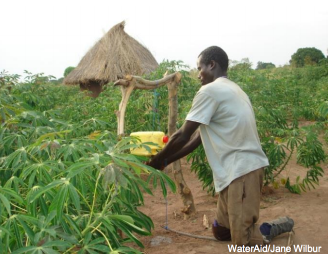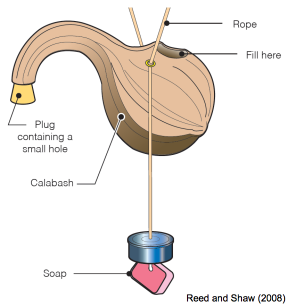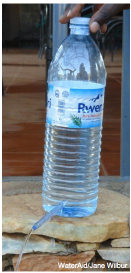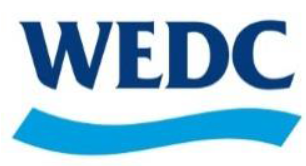Accessible - Handwashing
From Akvopedia
| Suitable for: all, especially people with weak legs or the use of only one hand. |
| Construction | Advantages | Disadvantages | Improvements / variations | Cost / labour |
| 5L jerrycan with hole(s) pierced near the top, hung from a rail. Jerrycan is tipped by pressing a foot on a stick attached by a string to the lid. | Easy to construct using local materials | Difficult to use if person cannot use their feet | Needs to be regularly filled with water | Low |
| Suspended gourd; large hole for filling, small hole in plug for pouring |
|
Not very durable | Needs to be regularly filled with water | Low |
| Cut-away jerrycan; water is scooped out with a ‘ladle’ made of a plastic aerosol lid fixed to a stick |
|
Open to contamination |
|
Low |
| 1L plastic bottle with ballpoint pen casing inserted via a hole near the bottom. Water flows when lid is loosened, stops when lid tightened. |
|
|
The bottle could be replaced with a jerrycan to reduce the frequency of refilling, as long as the lid was tight-fitting. | Low |
Acknowledgements
- Content and images: Compendium of accessible WASH technologies WaterAid and WEDC.





